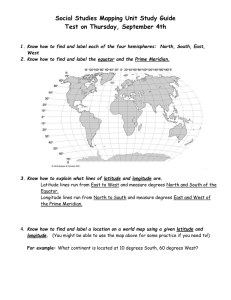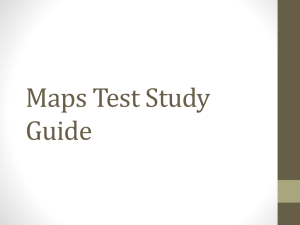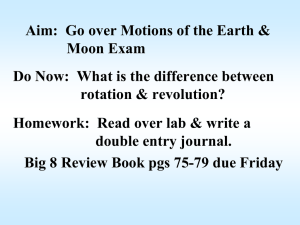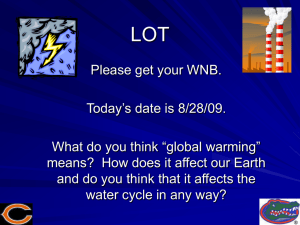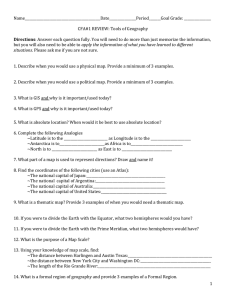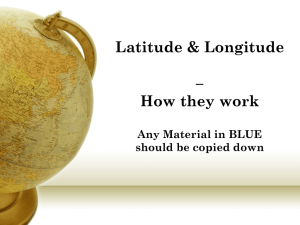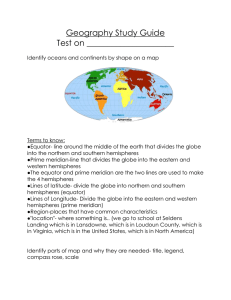Geography Notes PowerPoint
advertisement
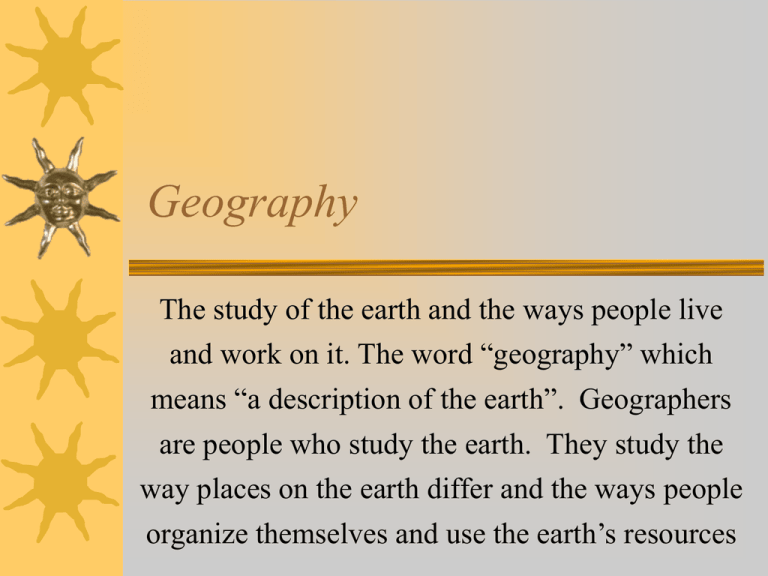
Geography The study of the earth and the ways people live and work on it. The word “geography” which means “a description of the earth”. Geographers are people who study the earth. They study the way places on the earth differ and the ways people organize themselves and use the earth’s resources Latitude lines Imaginary lines running horizontally around the globe. Also called parallels, latitude lines are equidistant from each other. Latitude is measured from 0° to 90° north and 0° to 90° south—90° north is the North Pole and 90° south is the South Pole. Equator Zero degrees latitude. The equator divides the globe into the Northern and Southern hemispheres. The equator appears halfway between the North and South poles, at the widest circumference of the globe. Longitude Lines Imaginary lines, also called meridians, running vertically around the globe. Unlike latitude lines, longitude lines are not parallel. Meridians meet at the poles and are widest apart at the equator. The degrees of longitude run 180° east and 180° west from the prime meridian. Prime Meridian Zero degrees longitude (0°). The prime meridian divides the globe into the Western and Eastern hemispheres. The Earth's time zones are measured from the prime meridian. The time at 0° is called Greenwich Mean Time (GMT). With the Greenwich meridian as the starting point, each 15° east and west marks a new time zone. Hemisphere A hemisphere is half the Earth's surface. The four hemispheres are the Northern and Southern hemispheres, divided by the equator (0° latitude), and the Eastern and Western hemispheres, divided by the prime meridian (0° longitude) and the International Date Line (180°). Location- “Where is it?” -AbsoluteIt is shown by an address. The address can be any type that gives an exact position. -RelativeSaying where something is in relation to somewhere or something else shows it. Place- “What is it like there?” -Human CharacteristicsThings that have changed due to people -Physical CharacteristicsThings that occur naturally Human/Environmental Interaction “What is the relationship between people and their environment?” -This is about the relationship between people and their environment, or how they work together. -Three key concepts to human/environmental interaction: Humans adapt on the environment. Humans modify the environment. Humans depend to the environment. Movement“How are people and places connected?” - Movement includes the movement of people, things, such as goods, as well as communications (the movement of ideas). Regions“How is a place similar to and different from other places?” -Defined by a government or physical characteristics -Defined by a function -Loosely defined
